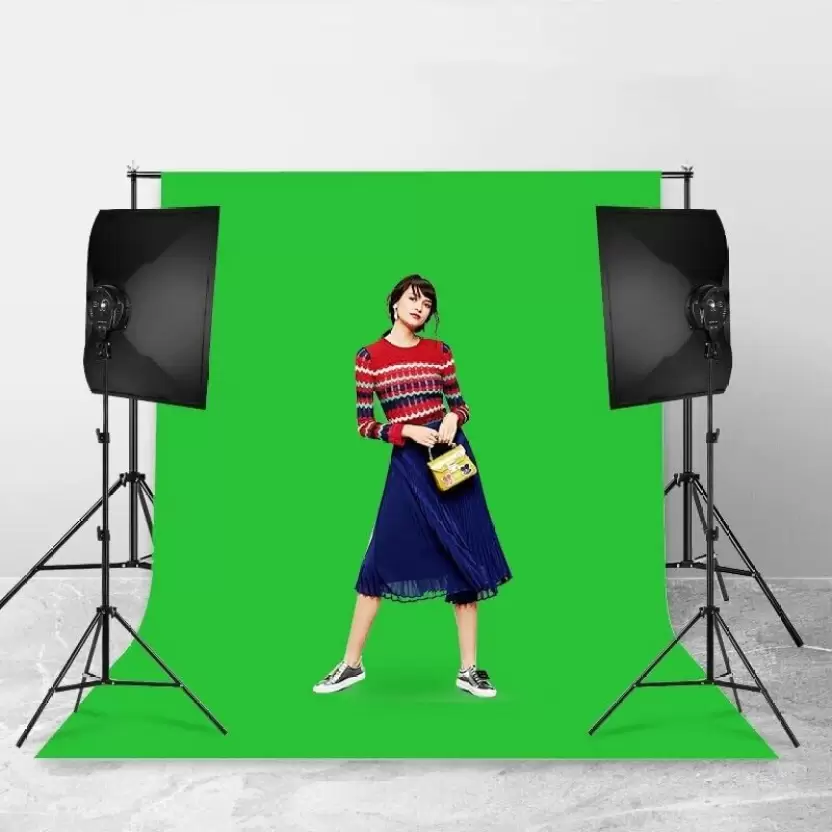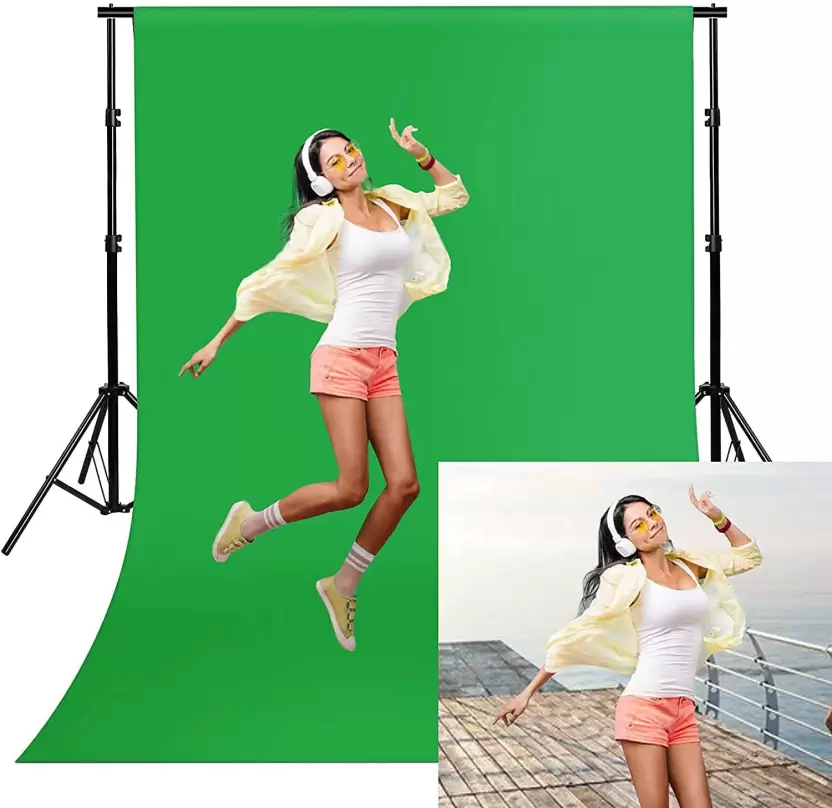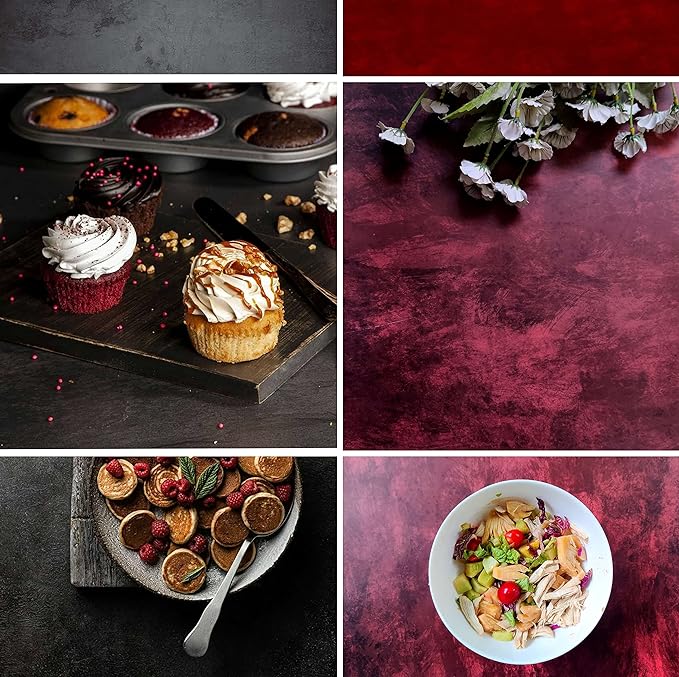

Introduction to Printed Photography Background
Photography needs a good background. It’s like the stage for a story. Printed Photography Backdrops help make pictures special. We’re here to talk about picking the right ones. But we’re not just looking at the ones you buy. We’re also diving into DIY backdrops. That means making your own, getting creative, and adding your touch to photos.
In this guide, we’ll go through materials, printing, and designs. We’ll help you understand DIY backdrops better. By the end, you’ll see how DIY options can make your photos unique.
1. Understand Your Photography Needs
Printed Photography Backdrops play a crucial role in setting the tone, enhancing the subject, and ultimately framing the photograph. Understanding your unique photography requirements is fundamental when choosing the right backdrops.
1.1 Intended Use Across Photography Styles
Different photography styles demand varying backdrop characteristics.
- Portrait Photography: For portraits, consider backdrops that complement skin tones and highlight facial features. Neutral tones or soft textures often work well.
- Product Photography: Backdrops should accentuate product colors and textures without overpowering them. Solid colors or minimalistic patterns are preferable.
- Landscape Photography: While natural scenes may be captured outdoors, backdrops can emulate certain environments or serve as a base for creative compositions.
1.2 Impact of Design, Color, and Texture
- Design Aesthetics: The backdrop’s design impacts the overall feel of the image. Solid colors bring focus to the subject, while patterns or scenes can add depth and context.
- Color Palette: Consider the color scheme that complements the subjects you’ll be photographing. Neutral tones for versatility or vibrant colors for a specific theme.
- Texture Consideration: Textured backdrops can add depth to images, but they might require careful attention to avoid distractions.
1.3 Backdrop Size Requirements
The size of the backdrop is crucial in achieving the desired composition and framing.
- Studio Space: Measure the available space to ensure the backdrop fits comfortably without overcrowding or appearing too small.
- Subject Placement: Larger backdrops allow flexibility in positioning subjects and props, enhancing creative possibilities.
- Portability Needs: Consider the portability required for on-location shoots. Foldable or smaller-sized backdrops might be more practical.
Types of Printed Photography Backdrops and Their Specialized Uses
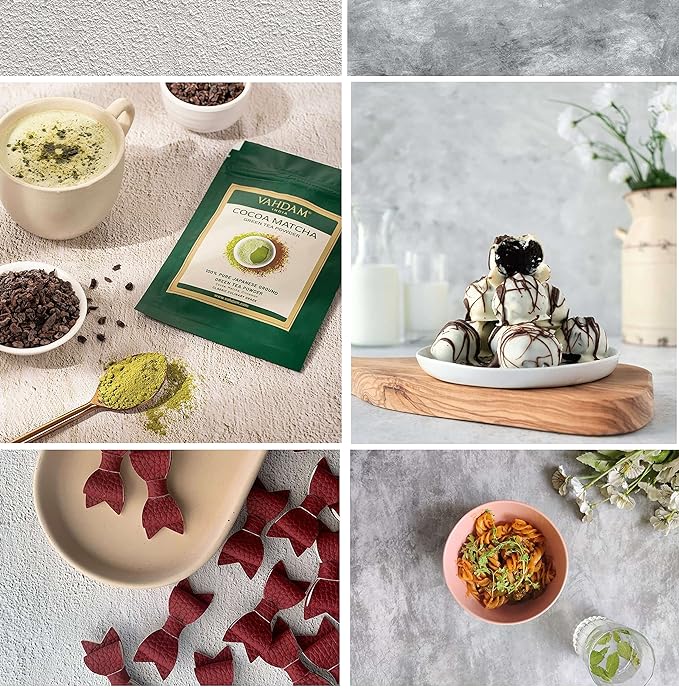

Muslin Backdrops: Elegant Versatility for Portrait and Studio Photography
Muslin backdrops, crafted from woven cotton fabric, offer a soft and versatile solution for photographers. Ideal for portrait and studio settings, these backdrops drape elegantly, creating seamless backgrounds that complement the subject. Their ability to absorb light effectively and the option to dye or paint them for customized designs make them a preferred choice for professionals aiming for sophisticated portrait or fashion shoots.
Vinyl Backdrops: Durability and Cleanliness Tailored for Product Photography
Vinyl backdrops, characterized by their durability and water-resistant surface, are well-suited for product photography. These backdrops facilitate easy cleaning, making them ideal for displaying products where a clean, professional look is essential. While they offer versatility in replicating various textures and scenes, caution is advised due to potential glare under direct lighting.
Canvas Backdrops: Textured Durability for Artistic and Outdoor Photography
Canvas backdrops, known for their textured surface and durability, are favored in artistic and outdoor photography. Providing a natural texture, they’re suitable for creating vintage-style or artistic shots. Although heavier compared to other materials, their durability makes them ideal for high-traffic studio setups or outdoor shoots where resilience is paramount.
Paper Backdrops: Affordability and Smoothness for Studio Flexibility
Paper backdrops are affordable, disposable, and come in various colors and patterns. Perfect for studios or situations requiring frequent backdrop changes, these backdrops offer a clean, smooth background without texture. However, they might be vulnerable to damage if mishandled and might not be ideal for outdoor use due to their susceptibility to tearing.
Polyester and Synthetic Fabrics: Versatility and Wrinkle-Resistance for All-Purpose Needs
Polyester and synthetic fabric backdrops provide versatility and wrinkle-resistance, catering to diverse photography needs. These backdrops are easy to clean, don’t wrinkle easily, and offer various print options. Their adaptability makes them suitable for events, portraits, and themed shoots, appealing to photographers seeking a balance between quality and convenience.
Specialty Fabrics: Chroma Key and Reflective Backdrops for Unique Effects
Specialty fabrics cater to specific purposes, such as chroma key green screens or reflective backdrops. Chroma key backdrops are indispensable for video production or post-production editing, while reflective backdrops serve specialized lighting purposes. While these fabrics offer unique visual effects, they might have limited applicability in general photography setups.
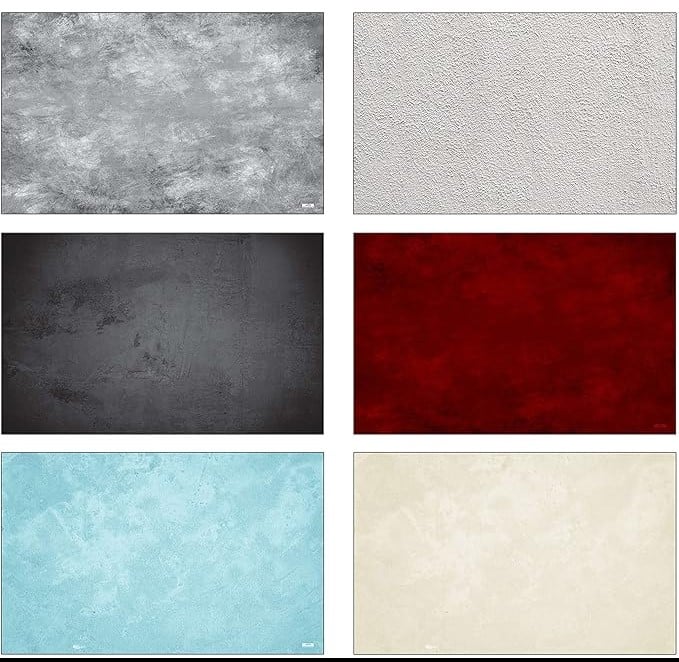

Consideration of Design and Patterns in Printed Photography Backdrops
Design and patterns play a pivotal role in enhancing the visual appeal and impact of a printed photography backdrop. Understanding how different designs and patterns complement various photography styles is crucial when choosing the right backdrop.
1. Importance of Design Aesthetics:
Design aesthetics influence the overall mood, ambiance, and visual interest in a photograph. Whether it’s a solid color, intricate pattern, or a detailed scene, each design choice contributes uniquely to the composition.
2. Solid Colors:
Solid-colored backdrops offer simplicity and versatility. They provide a clean, unobtrusive background that can direct the viewer’s attention solely to the subject. Black, white, gray, and various muted tones are popular choices for solid-colored backdrops, suitable for a wide range of photography genres.
3. Patterns and Textures:
Patterns and textures add depth and character to photographs. From subtle textures to bold patterns, they can evoke different emotions and complement diverse subjects. Textured backdrops, such as wood or brick patterns, can create an environment that enhances the subject’s narrative.
4. Scenes and Themes:
Backdrop scenes or themed designs transport the subject to a different setting, instantly creating a story within the photograph. Scenes can range from cityscapes and landscapes to abstract art or seasonal themes. These backdrops are often used in portrait or commercial photography to create a specific atmosphere or mood.
5. Suitability for Different Photography Genres:
- Portrait Photography: Designs that complement and don’t overwhelm the subject are preferred. Solid colors, subtle textures, or abstract patterns can add depth without distracting from the subject’s essence.
- Product Photography: Clean and non-distracting patterns or solid colors work best to emphasize the product without competing for attention.
- Landscape Photography: Backdrops with scenes or natural landscapes can enhance outdoor or studio landscape photography, creating an immersive setting.
6. Contrast and Subject Interaction:
Choosing a backdrop with contrast to the subject can make it stand out. For instance, a brightly colored subject against a dark backdrop creates visual impact, drawing attention to the subject’s details.
7. Customization and Personalization:
Many photographers opt for customizable backdrops to reflect their unique style or branding. Custom-designed backdrops allow for tailored patterns, colors, or even logos, ensuring a distinct visual identity in photography work.
8. Blending with Branding or Context:
For commercial photography or branding purposes, backdrops need to align with the brand’s aesthetics or the context of the shoot. Harmonizing the backdrop with the intended message or brand image is crucial for impactful visuals.
9. Versatility and Adaptability:
Selecting backdrops with versatile designs allows for their use in various shoots. Designs that can be easily adapted or manipulated through lighting or editing techniques provide flexibility in achieving different looks.
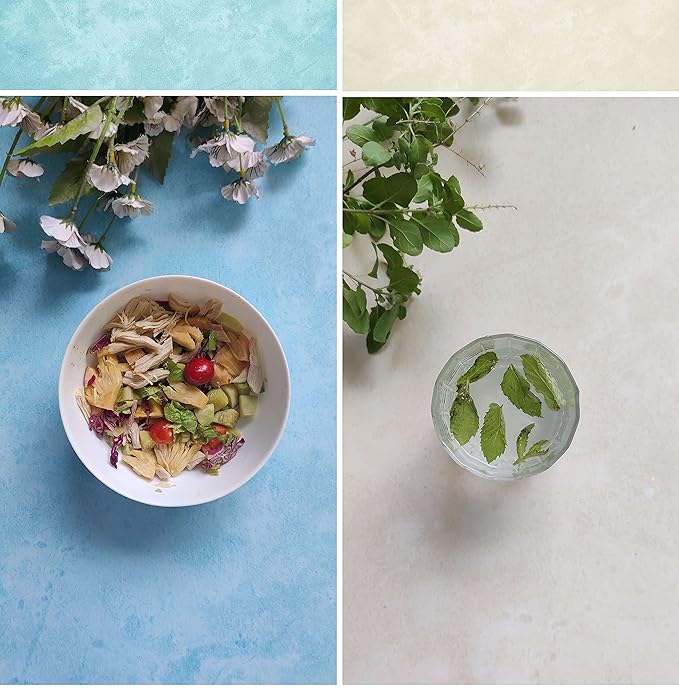

DIY Printed Photography Backdrops
Photography enthusiasts often seek personalized and unique backdrops to complement their creative vision. Crafting DIY printed photography backdrops offers the freedom to customize, experiment with various designs, and tailor backdrops to specific photography needs. Here’s a comprehensive guide on creating your own personalized backdrops:
1. Choosing Suitable Materials for Printed Photography Backdrops
Start by selecting appropriate materials based on the desired backdrop type:
- Fabric: Opt for muslin, cotton, or polyester fabric based on your preferences. Ensure it’s wrinkle-resistant and allows printing.
- Paper: Choose a durable and thick paper, preferably in rolls for larger backdrops.
- Canvas or Vinyl Sheets: These options provide sturdiness and durability for long-term use.
2. Preparing the Backdrop Surface
- Smooth Surface: Ensure the surface is smooth and free of imperfections to facilitate even printing.
- Cleaning: Clean the surface thoroughly to avoid any blemishes or dirt affecting the printed outcome.
3. Selecting and Printing Designs
- Design Selection: Choose designs that complement your photography style, whether it’s solid colors, patterns, scenes, or textures.
- Printing Techniques: Use home printers or professional printing services for high-quality prints. Experiment with stenciling, hand-painting, or digital printing for varied effects.
- Sizing and Scaling: Scale the design according to the backdrop size and ensure high resolution for crisp prints.
4. DIY Techniques for Different Backdrop Styles
- Hand-Painted Backdrops: Use acrylic or fabric paints to create unique designs. Blend colors or experiment with abstract patterns for artistic backdrops.
- Stenciled Backdrops: Utilize stencils to imprint intricate patterns or designs onto the backdrop surface, allowing for repeated patterns or motifs.
- Digitally Printed Backdrops: Design graphics or images using software and print them directly onto the backdrop material for precise designs and details.
5. Enhancing Durability and Texture of Printed Photography Backdrops
- Sealing and Protection: Apply sealants or protective coatings to prevent fading, smudging, or damage over time.
- Adding Texture: Create texture by layering paint, using textured materials, or applying additional elements like glitter or fabric accents.
6. Mounting and Using DIY Printed Photography Backdrops
- Mounting Options: Consider using dowels, stands, or mounting the backdrop to a wall or frame, ensuring it’s taut and free from wrinkles or creases.
- Flexible Usage: DIY backdrops offer versatility for indoor and outdoor shoots, providing photographers with customized options for various setups.
7. Maintenance and Storage Tips Printed Photography Backdrops
- Cleaning: Gently clean with a soft cloth or sponge to maintain the backdrop’s quality and colors.
- Storage: Store the backdrops rolled or folded (if applicable) in a dry and clean area to prevent creasing or damage.
8. Customization Ideas and Inspiration for Printed Photography Backdrops
- Seasonal Themes: Create backdrops tailored to specific seasons, festivals, or holidays for themed photoshoots.
- Texture Experimentation: Explore diverse materials, textures, and effects to add depth and visual interest to your backdrops.
- Collaborative Projects: Engage in collaborative DIY projects with other creatives to exchange ideas and techniques.


Cost Analysis: Balancing Budget and Quality
Investing in printed photography backdrops involves weighing the balance between cost-effectiveness and the quality required for your photography needs. Here’s a comprehensive breakdown to help you make an informed decision:
1. Evaluating Budget for Printed Photography Backdrops
- Determining Budget: Assess your financial limitations and allocate a reasonable budget for purchasing or creating backdrops.
- Consider Long-Term Investment: Analyze whether a higher initial investment in a durable backdrop might be cost-effective in the long run compared to frequent replacements of lower-quality backdrops.
2. Quality vs. Affordability of Printed Photography Backdrops
- Material Quality: Understand the correlation between material quality and cost. Higher-quality materials often come with a higher price tag but offer better durability and image resolution.
- Durability Consideration: Assess the backdrop’s longevity and factor in how often you might need to replace lower-quality backdrops due to wear and tear.
3. Analyzing Specific Photography Needs
- Photography Genres: Consider the specific genres you primarily focus on. For professional studios, investing in high-quality, versatile backdrops might be more beneficial, whereas occasional photographers might opt for more budget-friendly options.
- Usage Frequency: Determine the frequency of use and versatility required. Backdrops used infrequently might justify a lower investment compared to frequently used ones.
4. Balancing Features and Costs of Printed Photography Backdrops
- Feature Prioritization: Identify essential features such as size, texture, and color accuracy required for your photography. Invest more in backdrops that align with these critical features.
- Comparative Analysis: Compare various options in terms of features, materials, and prices across different vendors or DIY options.
5. Exploring Budget-Friendly Options for Printed Photography Backdrops
- DIY Backdrops: Consider crafting DIY backdrops using cost-effective materials and techniques. While this might require more time and effort, it can significantly reduce costs.
- Discounts and Sales: Keep an eye on discounts, seasonal sales, or clearance offers from reputable vendors to obtain quality backdrops at reduced prices.
6. Cost-Effectiveness Over Time
- Long-Term Savings: Evaluate whether investing more initially in high-quality backdrops might lead to long-term savings by avoiding frequent replacements or repairs.
- Cost of Maintenance: Factor in potential maintenance costs, such as cleaning or repairs, for different types of backdrops.
7. Recommendations and Reviews
- User Reviews: Research and read user reviews or seek recommendations from fellow photographers to gauge the cost-to-quality ratio of different backdrops.
- Expert Opinions: Consider insights from photography experts or professionals who have experience with various backdrop types.
8. Flexibility in Choices
- Size and Material Options: Explore vendors offering diverse size options and materials to accommodate varying budgets without compromising quality.
- Prioritizing Essentials: Focus your investment on essential backdrops required for your primary photography needs rather than overspending on unnecessary varieties.
Conclusion: Making Informed Decisions
Balancing budget and quality involves a meticulous assessment of your photography requirements, budget constraints, and the long-term benefits of different backdrop options. By carefully analyzing the cost-effectiveness of each choice against the desired quality, you can make informed decisions that align with your photography goals while optimizing your expenditure for Printed Photography Backdrops.
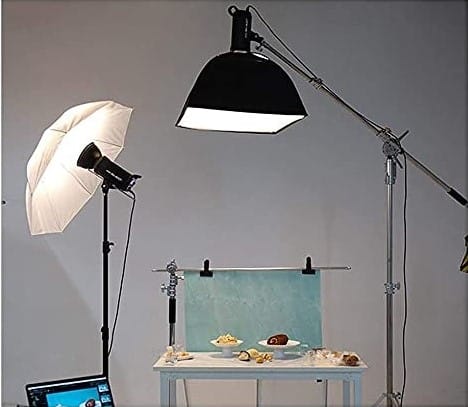

Maintenance and Longevity of Printed Photography Backdrops
Preserving the quality and durability of printed photography backdrops requires regular care and proper handling. Here’s a comprehensive overview of maintenance practices to extend their longevity:
1. Cleaning Procedures
- Gentle Cleaning: Use a soft cloth or sponge to gently wipe the surface of your Printed Photography Backdrops to remove dust, dirt, or smudges.
- Avoid Harsh Chemicals: Refrain from using harsh cleaning agents or solvents that might damage the printing or material.
2. Handling and Storage
- Proper Handling: Handle the Printed Photography Backdrops with care during setup and takedown to prevent tears, creases, or wrinkles.
- Storage Conditions: Store backdrops in a dry, clean, and temperature-controlled environment to prevent moisture damage or discoloration.
3. Regular Inspections of Printed Photography Backdrops
- Visual Checks: Periodically inspect the backdrop for any signs of damage, tears, or fading.
- Addressing Issues Promptly: Address any minor damages promptly to prevent them from worsening.
4. Preventing Wrinkles and Creases
- Rolling Technique: Roll the Printed Photography Backdrops instead of folding them to avoid permanent creases.
- Steaming or Ironing: Use a steamer or iron on low heat to remove wrinkles before use, if necessary. Be cautious to avoid damage to the printing.
5. Protection and Maintenance Products
- Protective Coatings: Consider applying protective coatings or sealants to prevent fading or smudging over time.
- Storage Aids: Use appropriate storage aids like tubes or dedicated holders to prevent unnecessary creasing or damage during storage.
6. Specific Care for Different Materials
- Fabric Backdrops: Launder fabric backdrops according to manufacturer instructions, and avoid using strong detergents that might affect the printing.
- Vinyl or Canvas Backdrops: Wipe these backdrops gently with a damp cloth for cleaning without compromising the print quality.
7. Professional Maintenance
- Expert Cleaning Services: Consider professional cleaning services for stubborn stains or specialized materials to ensure proper maintenance.
- Repair Services: Seek professional help for significant tears or damages that require repairing or patching.
8. Usage Guidelines for Printed Photography Backdrops
- Appropriate Use: Use Printed Photography Backdrops in suitable settings and conditions, avoiding exposing them to extreme temperatures or direct sunlight for extended periods.
- Precautionary Measures: Take precautions during shoots to prevent spills or accidental damage to the backdrops.
Prolonging Printed Photography Backdrops Longevity
Maintaining printed photography backdrops through proper cleaning, careful handling, and suitable storage practices is vital to ensure their longevity. By adopting these maintenance routines and handling tips, photographers can preserve the quality of their backdrops, allowing for prolonged usage and consistent high-quality photo outcomes.
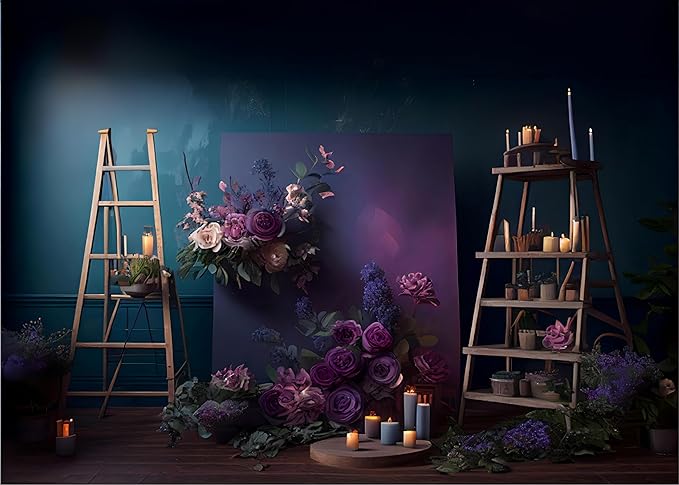

Conclusion: Choosing Printed Photography Backdrops Wisely
Picking the right Printed Photography Backdrops matter for great photos. Different materials like fabric, vinyl, canvas, and DIY options offer choices for various photo styles.
What We Learned
- Backdrop Variety: There are lots of materials. Some are good for specific photos, like vinyl for products or fabric for portraits. DIY backdrops let you make your own creative designs.
- Money and Quality: You need to balance cost and quality. Spending more on durable backdrops might save money in the long run by not needing replacements often.
- Taking Care of Backdrops: Keep backdrops clean and handle them gently. Storing them well helps them last longer. Different materials need different care.
Final Thoughts
Choosing Printed Photography Backdrops isn’t just about materials. It’s about knowing what you need for your photos. Backdrops that work in different situations give you more freedom to be creative.
Picking the right Printed Photography Backdrops isn’t just about looks—it’s about making your photos stand out and telling stories with your pictures.
Where to buy the Best Printed Photography Backdrops in India?
For a variety of backdrop colors suitable for different photography needs, visit the website thewonderproducts.com/shop. They likely offer a range of backdrop options. If you prefer shopping on Amazon India, consider exploring the Photography Backdrops section. [Here]
Please note that the link provided is an affiliate link, which means that I may earn a commission if you make a purchase through this link, at no additional cost to you. This helps support the website and allows me to continue providing helpful information to photographers like you.
Where to Find the Best Printed Photography Backdrops in the USA?
For a diverse selection of backdrop colors suitable for various photography needs, consider exploring the Photography Backdrops section on Amazon USA. If you want to visit that page directly then you can visit by clicking [Here]
Please be aware that the link provided is an affiliate link. If you make a purchase through this link, I may earn a commission, at no extra cost to you. This helps support the website, enabling me to continue offering valuable information to photographers like you.
Want to know more about shooting Videos and Photographs using Backdrops? Please Visit Wonder Products to know more useful tips about Green Screen ChromaKey & Learn more about Stunning Visual Content Creation by using these tricks. https://thewonderproducts.com/

